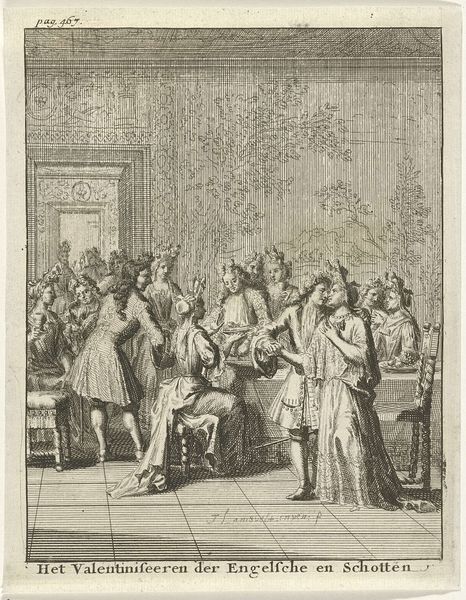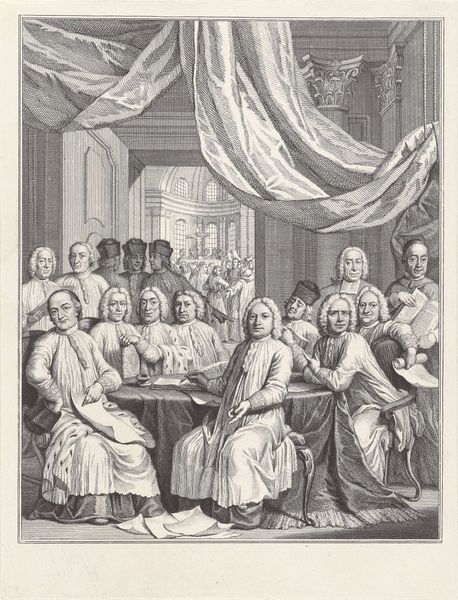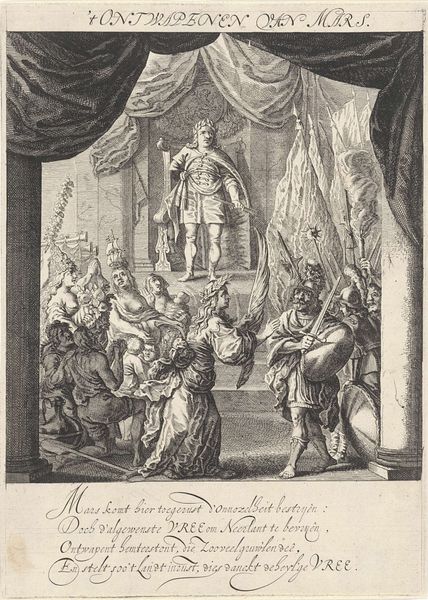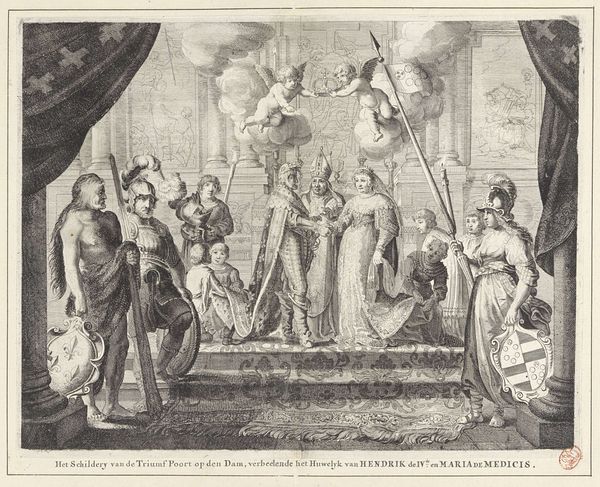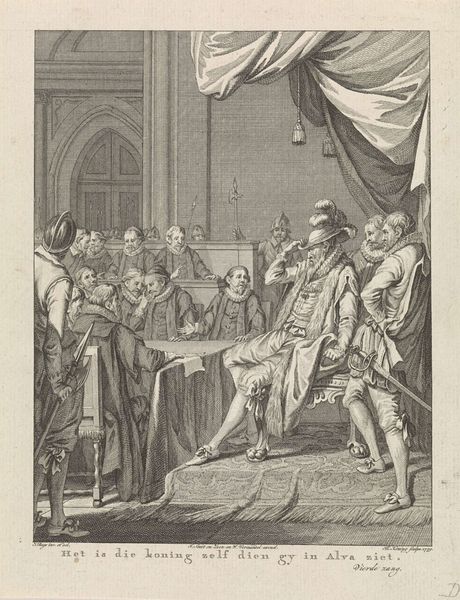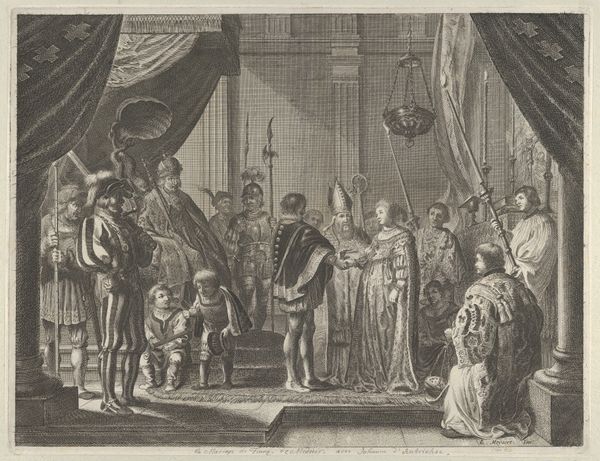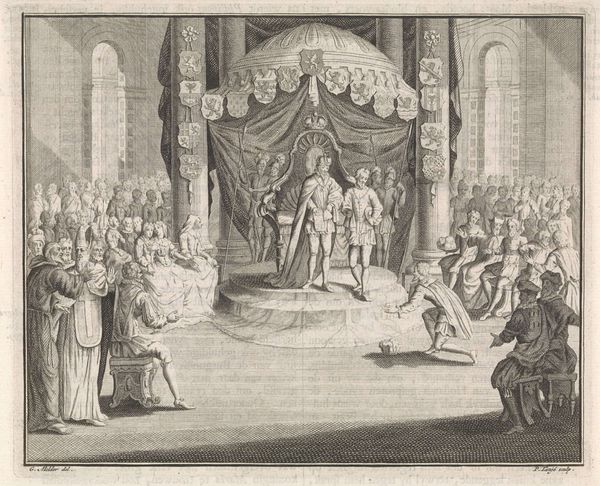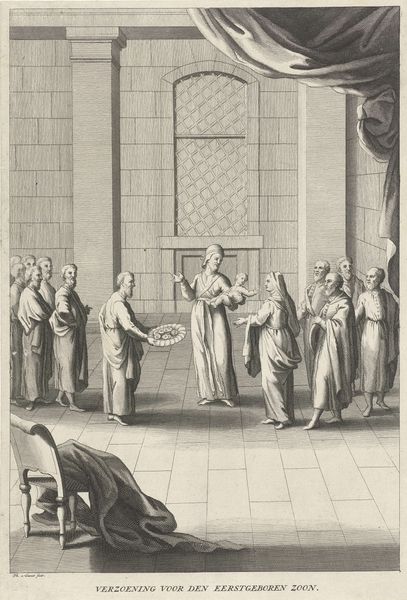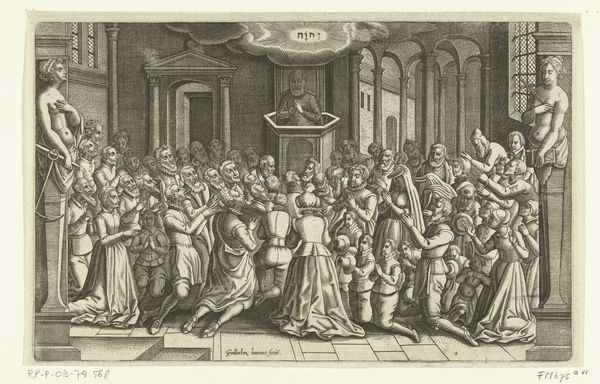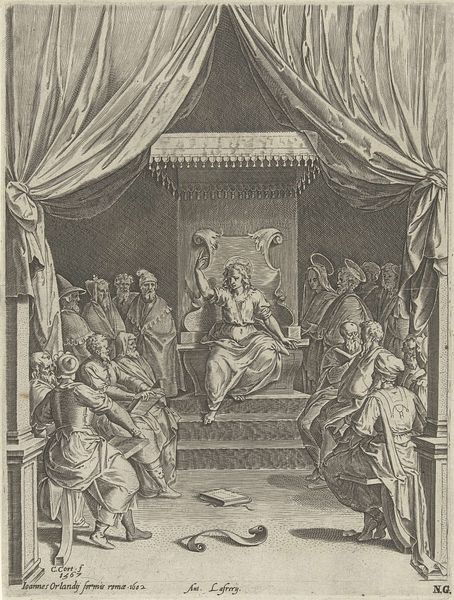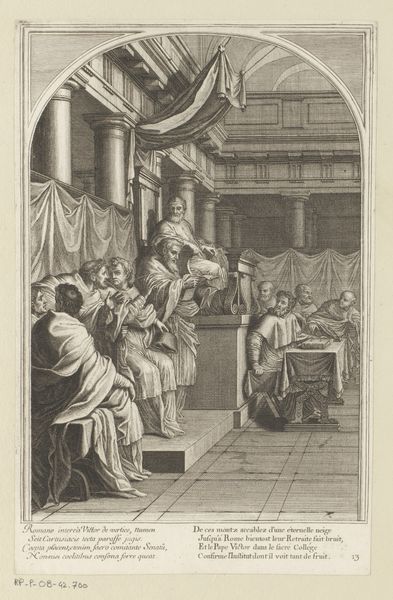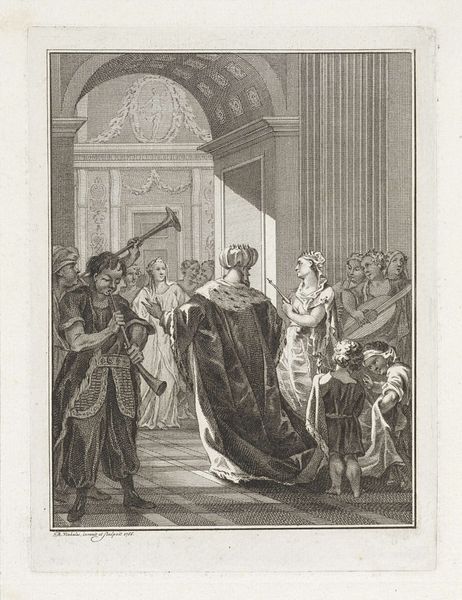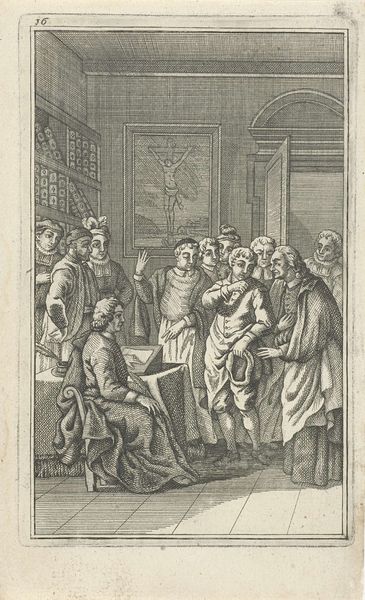
engraving
#
narrative-art
#
baroque
#
history-painting
#
engraving
Dimensions: height 253 mm, width 198 mm
Copyright: Rijks Museum: Open Domain
Curator: Look at this intriguing scene— "The Wedding at Cana," an engraving from around 1670-1672, currently housed at the Rijksmuseum. Editor: My first thought? Chaos. The image is so busy, filled with figures. The contrast feels harsh. Curator: As a historical artwork, it depicts the biblical story of Jesus' first miracle: turning water into wine during a wedding feast. You can almost feel the bustling energy of the wedding. I mean, the scene depicts an exclusive inner chamber while the broader setting alludes to communal practices associated with early notions of governance and law making. Editor: Do you really sense “communal practices" when everything is dominated by Jesus? Even within the setting there's a clear visual hierarchy that's reflective of social strata; with gender dynamics so unbalanced here... how much room is there to interpret genuine community? Curator: That's a fair critique. Baroque art, generally speaking, was very keen on clear symbolic cues like that; hierarchies were intrinsic in religious art that time. Editor: I agree, but I think our awareness of power imbalances compels us to analyze not just what the artwork "shows," but what its ideological underpinnings mean for a modern audience— and its place within evolving dialogues around equality and liberation. We still need to interrogate whose perspective this story privileges and what it marginalizes. Curator: Absolutely, analyzing those biases helps. Focusing on what an artwork meant in its original social context helps avoid overly presentist views of art, doesn’t it? For instance, many things we may now identify as marginalising were deemed essential virtues at that point. Editor: To be clear though, focusing on contemporary interpretations is not about being overly presentist, but being more responsible to what it could signal. How can a modern museum present art that invites reflection? That acknowledges our changing understandings? I look at all the water jars lined up and want to scream: whose labour made the water that got turned into wine, for whom and on whose dime? Curator: Point well taken; and what about all the feast leftovers discarded at the floor? This piece is just dense in symbolic social, religious and ideological meanings. It’s wonderful to delve deeper in its complexities together. Editor: I agree. It's a work that rewards those efforts. Hopefully visitors will keep questioning beyond our talk today.
Comments
No comments
Be the first to comment and join the conversation on the ultimate creative platform.
